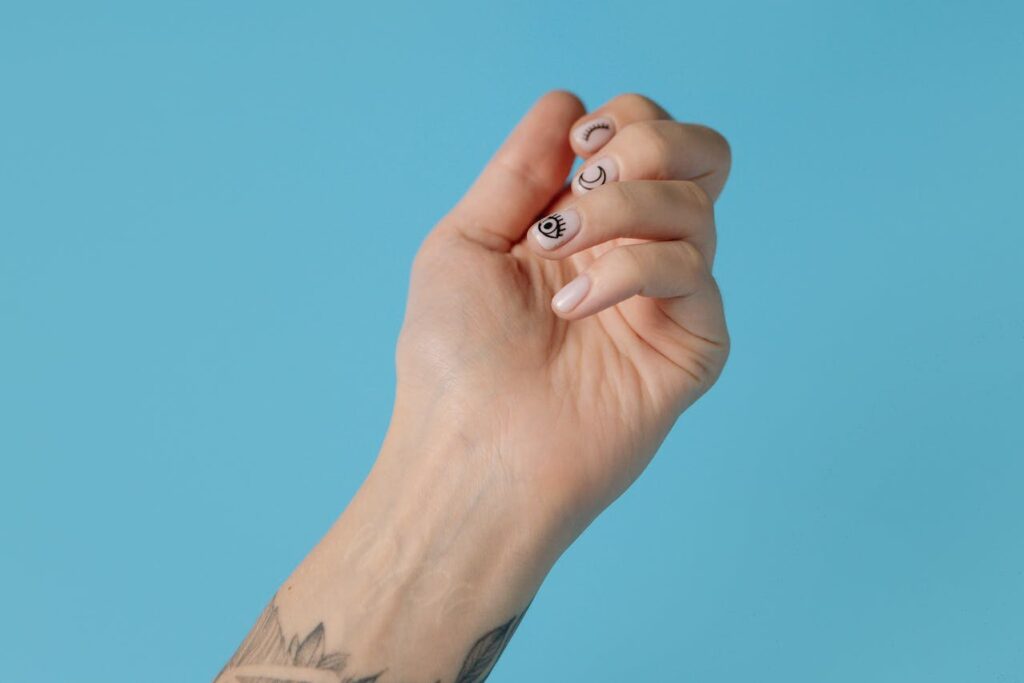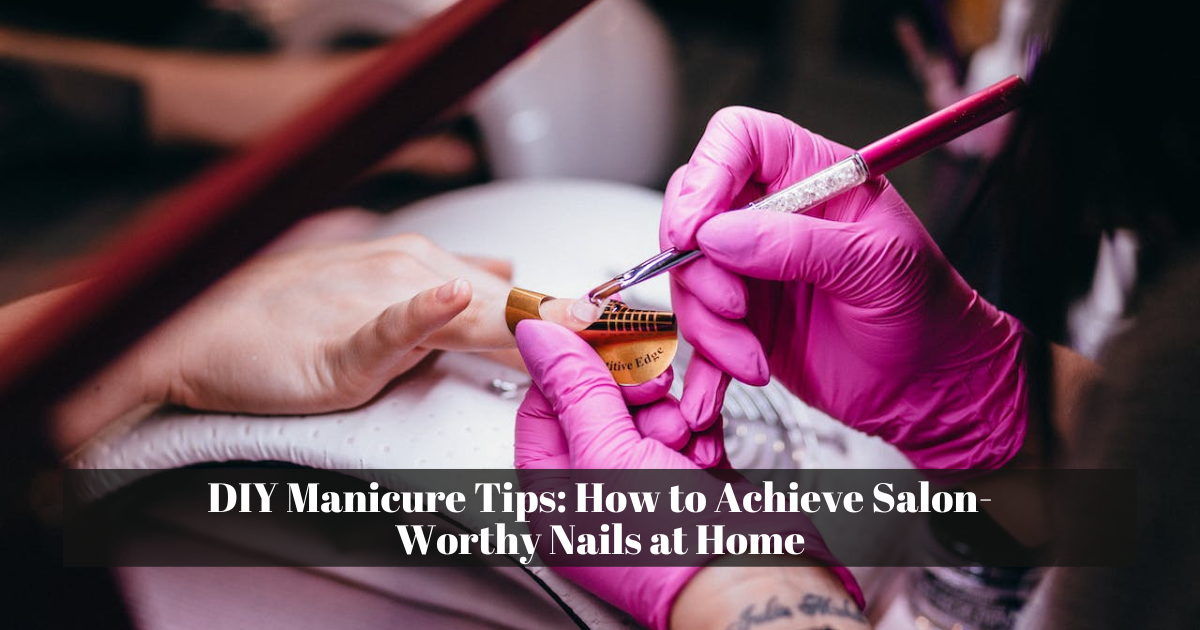As the world continues to accelerate, self-care has emerged as a critical component in preserving one’s general health. Although salon treatments may evoke feelings of luxury, they may not always be feasible or cost-effective. Nevertheless, that does not imply a reduction in the standard of your manicure. Salon-quality manicures are achievable within the confines of one’s personal space, given the proper equipment, methods, and some perseverance. This all-encompassing manual will delve into do-it-yourself manicure strategies that will enable you to indulge your nails and discover your true artistic potential.
1. Gather Your Tools and Supplies
Before diving into your DIY manicure, it’s important to gather all the necessary tools and supplies. Here’s a list of essentials you’ll need:
- Nail polish remover
- Cotton pads or balls
- Nail clippers
- Nail file
- Cuticle pusher or orange stick
- Cuticle oil
- Base coat
- Nail polish (in your desired colors)
- Top coat
- Nail polish thinner (optional)
- Nail buffer (optional)
- Nail brush (optional)
- Hand cream or lotion
Having these tools readily available will streamline the manicure process and ensure professional results.
2. Prepare Your Nails

Essential to achieving a flawless manicure is adequate nail preparation. Begin by removing any existing nail lacquer with a nail polish remover that does not contain acetone. Removers that do not contain acetone are gentler on the cuticles and nails, thereby preventing over-drying.
Once your nails are free of polish, use manicure clippers to trim them to the desired length. Straight across should be the cutting line to prevent ingrown nails. Following this, apply a manicure shaper with a nail file. Utilize a fine-grit, gentle file to prevent injury to the nail and guarantee a smooth edge. By filing in a single direction, one can prevent the nails from becoming weakened.
It is after contouring to attend to the cuticles. Using an orange stick or cuticle pusher, gently press your cuticle back. It is detrimental to the nails and can result in infections and harm if the cuticles are cut. Apply a nourishing cuticle oil in its place to hydrate and soften the cuticle region.
3. Nail Care Techniques
Before applying nail varnish, you must remove any debris from your nails. Scrub your nails gingerly with a nail brush dipped in warm, soapy water to eliminate any dirt or oil residue. Be sure to fully dry your nails before moving on to the subsequent phase.
To smooth the manicure bed of nails prone to ridges or uneven surfaces, one may wish to utilize a nail buffer. However, exercise caution when buffing, as excessive buffing can gradually deteriorate the nails.
4. Perfecting the Polish

The exciting portion now begins: applying nail polish! To attain an expert-level completion, adhere to the following guidelines:
A. Start with a Base Coat
Applying a base coat not only protects your nails from staining but also helps the polish adhere better and last longer. Choose a base coat that suits your nail type, whether it’s strengthening, hydrating, or ridge-filling.
B. Apply Thin, Even Layers
When applying nail polish, less is more. Begin by wiping excess polish off the brush and applying a thin, even layer to the center of the nail. Use gentle, steady strokes and avoid flooding the cuticles. Allow the first coat to dry completely before applying a second coat for full coverage.
C. Master the Cleanup
To achieve clean, professional-looking nails, invest in a precision brush or angled brush dipped in acetone-free nail polish remover. Use this tool to tidy up any polish that has strayed onto the skin or cuticles. For stubborn mistakes, wrap a cotton swab around the tip of an orange stick and dip it in remover for precise cleanup.
D. Seal the Deal with a Top Coat
Once your color coats are dry, finish off your manicure with a high-quality top coat. A top coat not only enhances the shine of your polish but also provides an extra layer of protection against chipping and peeling. Apply a thin layer of top coat, making sure to cap the free edge of the nail for extended wear.
5. Nail Care Maintenance
The maintenance of a do-it-yourself manicure is equally as crucial as its application. Maintain the following to ensure that your manicures remain vibrant and new:
- Moisturize regularly: Hydrate your hands and nails with a nourishing hand cream or cuticle oil to prevent dryness and maintain flexibility.
- Wear gloves: Protect your manicure by wearing gloves while performing household chores or working with harsh chemicals.
- Avoid heat and humidity: Excessive heat and humidity can cause nail polish to bubble and peel. Store your nail polish in a cool, dry place away from direct sunlight.
- Touch up as needed: Keep your manicure looking flawless by touching up any chips or imperfections with matching polish and top coat.
6. Experiment with Nail Art

After mastering the fundamentals of do-it-yourself manicures, why not express your individuality through nail art? The potential ranges from straightforward patterns and gradients to intricate polka dots and stripes. To elevate your manicure, consider investing in nail art supplies such as dotting tools, striping brushes, and nail imprinting plates.
Conclusion
Developing salon-quality manicures at home is an empowering and economical experience. By applying these do-it-yourself manicure techniques and suggestions, you can confidently nurture your nails while expressing your style. Keep in mind that with consistency, skill will develop; therefore, feel free to explore and enjoy your manicure creations. With some perseverance and time, you will be able to display impeccable manicures that can compete with those found in a professional salon.
FAQs
How long should I wait between applying each coat of nail polish?
It’s crucial to allow each coat of nail polish to dry completely before applying the next layer. Typically, you should wait at least 2-3 minutes between coats to ensure proper drying and prevent smudging or streaking. Using a quick-dry top coat can help accelerate the drying process.
How can I prevent my nail polish from chipping?
To extend the longevity of your manicure and prevent chipping, make sure to properly prep your nails by cleaning, shaping, and buffing them before applying polish. Additionally, always use a base coat and top coat to protect your nails and seal in the color. Avoid exposing your nails to excessive moisture or harsh chemicals, and consider wearing gloves during activities that may cause damage to your manicure.
What should I do if my nail polish becomes thick or clumpy?
If your nail polish has thickened over time or become clumpy, you can revive it using a nail polish thinner. Add a few drops of nail polish thinner to the bottle, and then gently roll the bottle between your hands to mix the thinner with the polish. Avoid using nail polish remover to thin out your polish, as it can alter the formula and affect the color and finish.
How can I remove stubborn glitter nail polish?
Glitter nail polish can be notoriously difficult to remove due to its textured nature. To effectively remove stubborn glitter polish, soak a cotton pad or ball in acetone-based nail polish remover and place it over the nail. Wrap each nail with aluminum foil to hold the cotton pad in place, and let it sit for 5-10 minutes. Afterward, gently rub the nail to remove the glitter polish. Repeat the process if necessary, and remember to moisturize your nails afterward to prevent drying.
Is it safe to cut my cuticles?
It’s generally not recommended to cut your cuticles, as they serve as a protective barrier against bacteria and infections. Instead, gently push back your cuticles using a cuticle pusher or an orange stick after soaking them in warm water. Apply cuticle oil regularly to keep your cuticles hydrated and healthy. If you notice any excess or overgrown cuticles, consider visiting a professional manicurist for expert care.
Read Also:- Trendy Nail Designs: Exploring the World of Manicures

